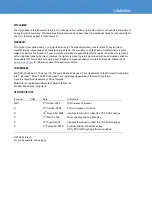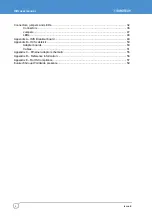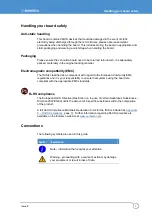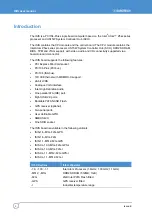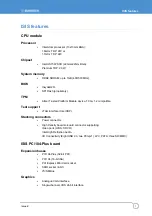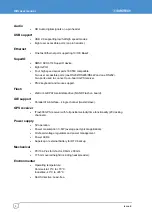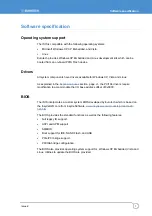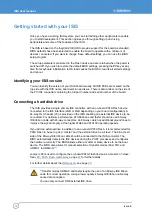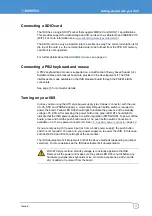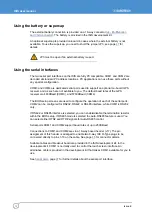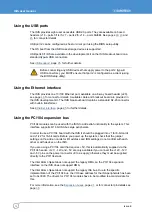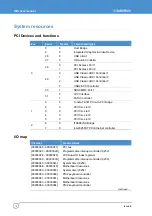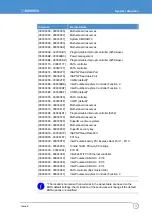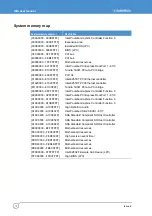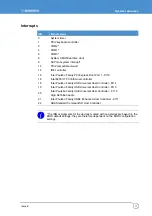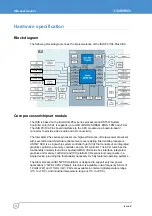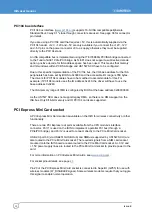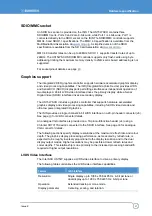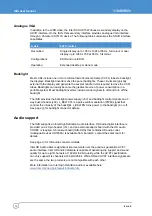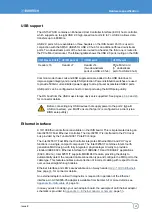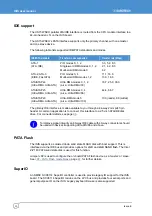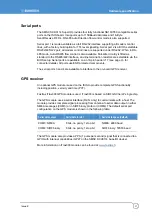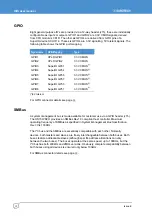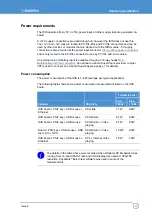
ISIS user manual
Issue E
14
Using the USB ports
The ISIS provides eight user accessible USB2.0 ports. They are available on boxed
headers (J16 – ports 0/1/4/5, J7 – ports 2/3, J14 – ports 6A/6B). See pages
for connector details.
USB port 2 can be configured as host or client port using the BIOS setup utility.
The OS boot from the USB mass storage devices is supported.
USB ports 0/1/4/5 are available in the development kit on the ISIS breakout board on a
standard type-A USB connectors.
, page
, for further details.
Before connecting any USB devices that supply power to the port 2 (type-B
USB connectors), you MUST ensure that port 2 is configured as a client (using
the BIOS Setup utility).
Using the Ethernet interface
The ISIS provides one 10/100 Ethernet port, available on a 8-way boxed header (J20),
see page
, for connector details. A suitable cable and breakout board are provided in
the ISIS development kit. The ISIS breakout board contains a standard RJ-45 connector
with built-in transformer.
, page
, for further details.
Using the PC/104 expansion bus
PC/104 modules can be used with the ISIS to add extra functionality to the system. This
interface supports 8/16 bit ISA bus style peripherals.
In order to use a PC/104 board with the ISIS it should be plugged into J1 for 8-bit cards
and J1/J2 for 16-bit cards. Before you power up the system, check that the jumper
settings on the add-on cards for I/O address and IRQ settings do not conflict with each
other or with devices on the ISIS.
If you are using a PC/104 card that re5V, this is automatically supplied via the
PC/104 header. +12V, –12V and –5V are only available if you connect the +12V, -12V
and –5V pins on the power connector J9 to a supply; otherwise they must be supplied
directly to the PC/104 stack.
The Intel Atom chipset does not support the legacy DMA, so the PC/104 expansion
interface on the ISIS does not support DMA.
The Intel Atom chipset does not support the legacy ISA bus. Due to the specific
implementation of the PC/104 bus, the I/O base address for the ISA peripherals has been
set to 0x3000. The drivers for PC/104 modules have to be modified to accommodate for
this.
For more information, see the
, page
, or for connector pin details see
page


